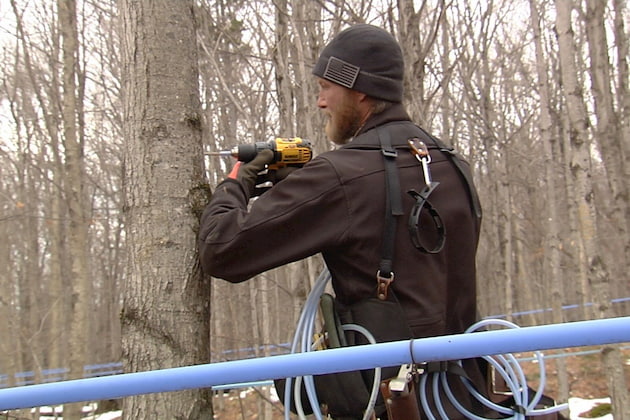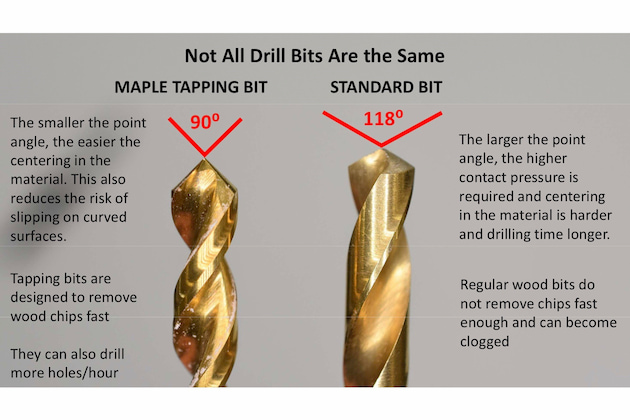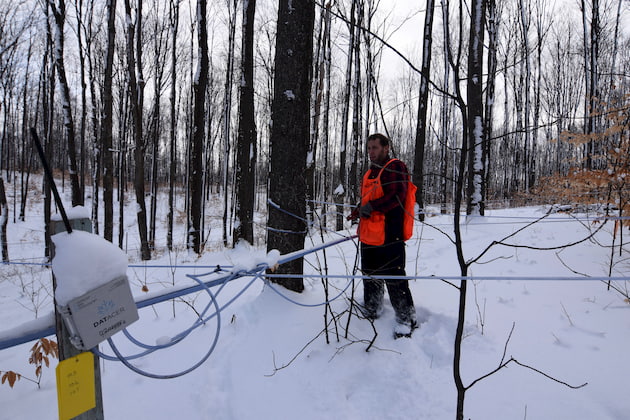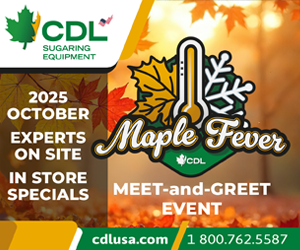Tapping & Tubing
Vermont sugaring experts offer tapping tips
Proper tapping equals more sap
By PETER GREGG | MARCH 3, 2020
UNDERHILL CENTER, Vt.—Town Meeting Day in Vermont, this year March 3, has traditionally been the day sugarmakers get back in the woods to start tapping.
While that old adage is not as true as it once was, with most bigger operations tapping in January or February, many sugarmakers will be out drilling this week in Vermont and across the U.S. Maple Belt.
Meanwhile, industry experts from Vermont were on the pre-season meeting circuit this winter touting good tapping practices.
“Proper tapping is critical,” said Dr. Timothy Perkins, director of the Proctor Maple Research Center as part of the University of Vermont.
Perkins was the keynote speaker at the Michigan Maple Producers Association annual meeting in Mt. Pleasant, Mich. in January.
Perkins shared much of the acquired knowledge that researchers at the center have accumulated, releasing study after study that shows proper tapping equals more sap, simple as that.
“Best management practices will lead to higher yields,” he said.
Sugarmakers should always remember that tapholes create a fairly sizable stain of brown wood from year to year, with that brown wood conducting almost zero sap the following years.
Sugarmakers must take time and care to avoid that stained wood.
Producers should spend time walking around the tree and use longer drop lines of 36 inches or more to maximize the reach to good tappable wood.
Perkins talked at length about the newer practice of tapping trees below the lateral line, which gives the sugarmaker much more tappable surface than tapping above the lateral alone.
“Tapping below the lateral line is very effective if you have good vacuum and good sanitation,” Perkins said.
Plus, make sure properly trained tappers are in the woods.
“Don’t give the hammer to a 10-year-old,” Perkins joked.
“Have someone tap who knows what they’re doing.”
Tap the tree with just the right amount of force and finesse.
“A tap is not a nail,” he said.
Perkins recommends a taphole depth of about 2 inches, including the bark, for maximum sap flow with the least amount of staining.
Tap the tree not with a household hammer but with a proper tapping mallet and use all of your senses to do it right.
“Listen for sound,” he said.
The mallet will make a distinctive change in pitch after two or three artful swings.
Do not tap further and drive the spout too far into the tree, he said. Too far equals less sap.
Perkins also addressed the angst many sugarmakers may be feeling this year with an exceptionally mild winter.
Get out there and tap in January, he said.
“Tapping early in the season will result in higher yields,” he said.
But only if vacuum is constant and sanitation is sound.
“Turn the pump on at the beginning of the season and turn it off at the end,” he said.
TAPPING TIPS:
-
Look at tree as approaching
-
Identify old tapholes
-
Select spot to drill (dropline)
-
Place drill on that spot
-
Stabilize drill with two hands
-
Drill at full-speed
-
One single in-out motion
-
2-3 seconds to drill hole


































